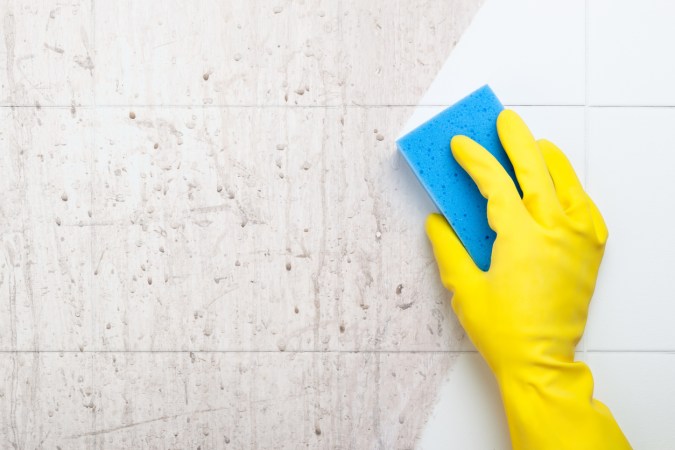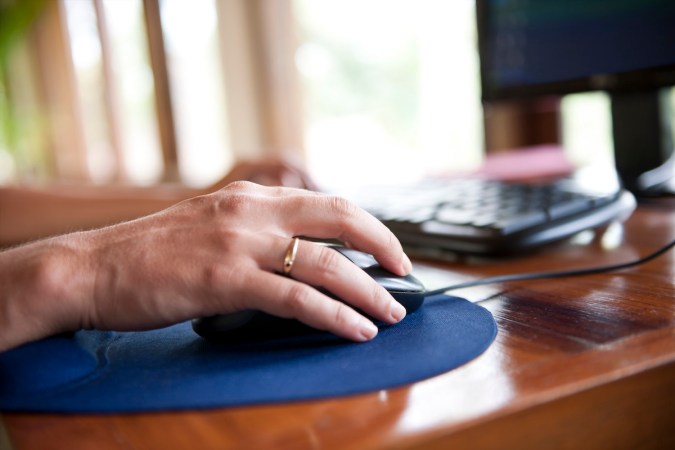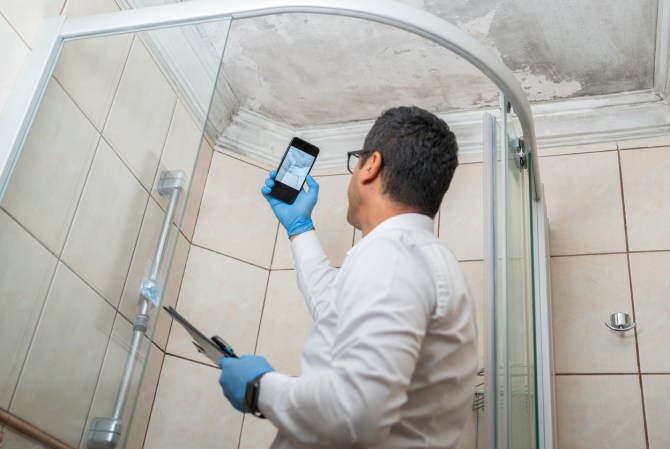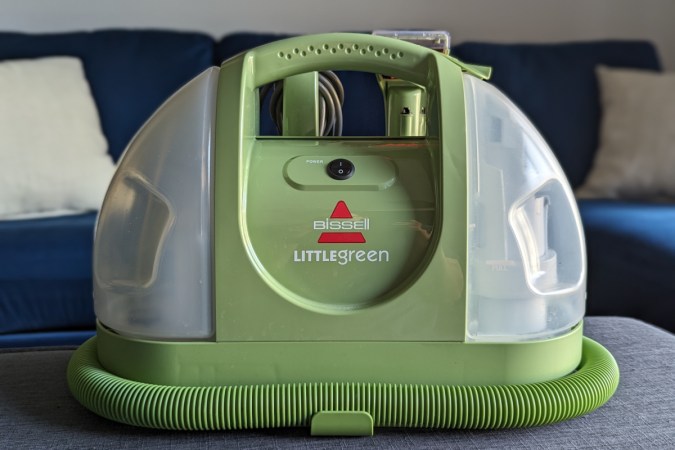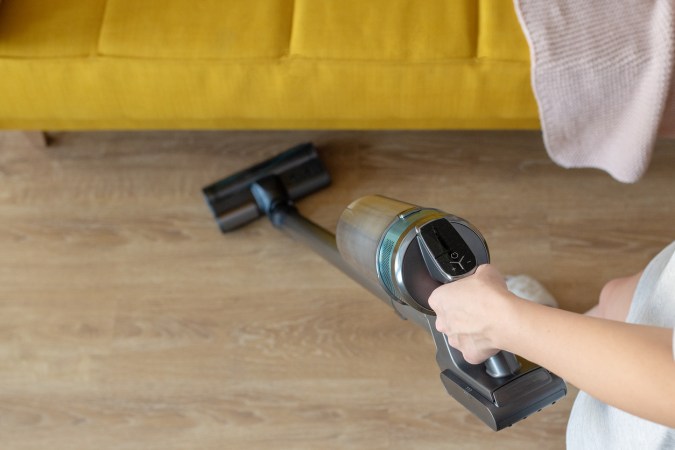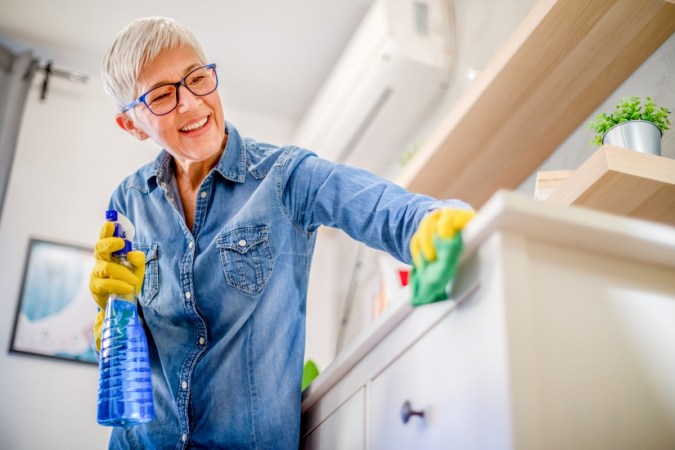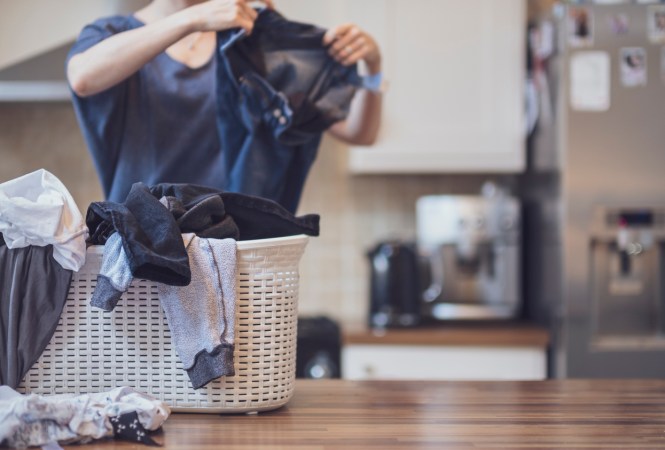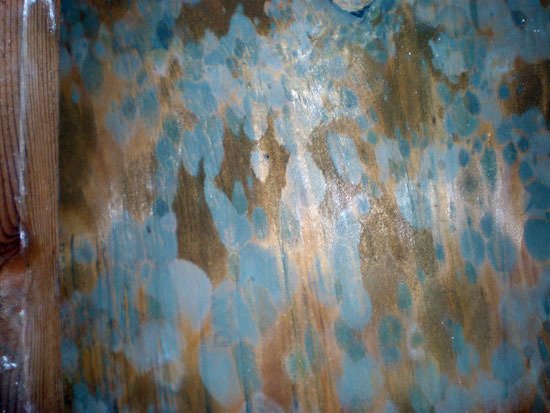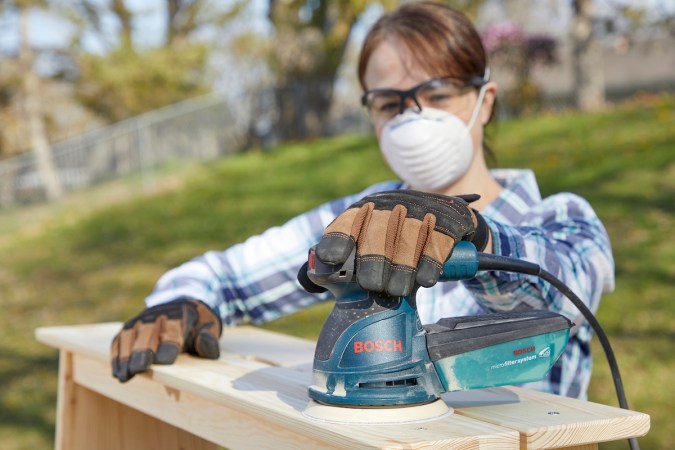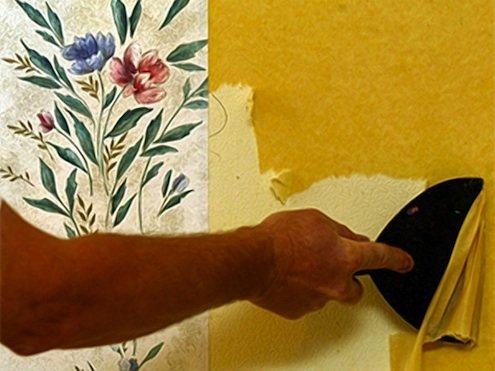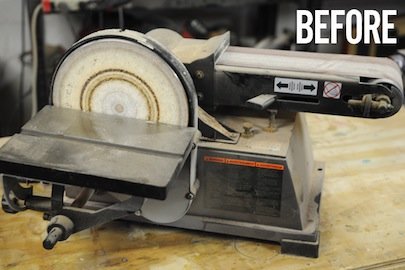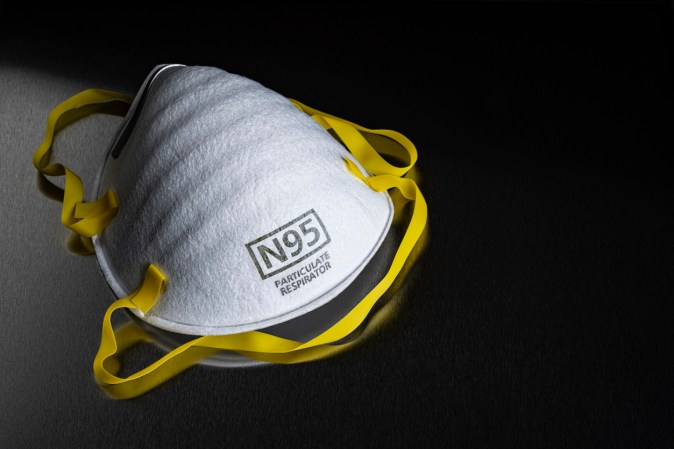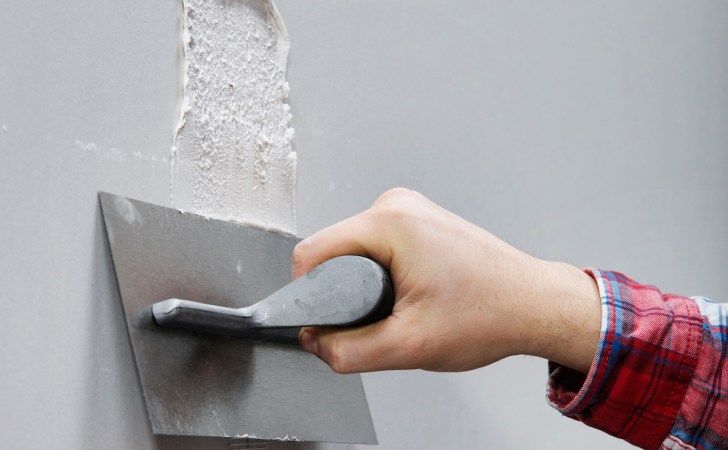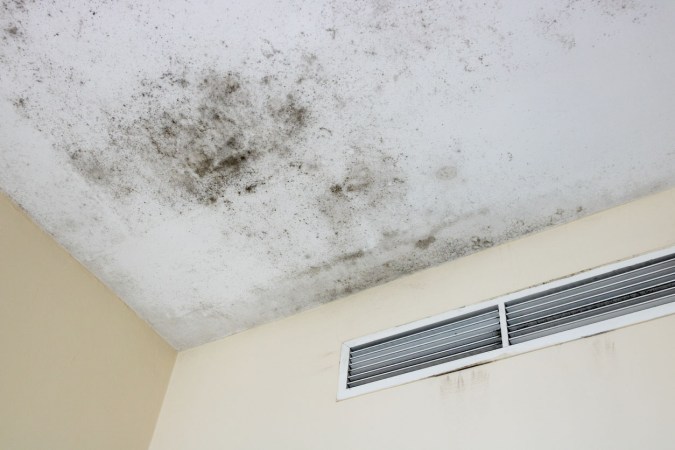We may earn revenue from the products available on this page and participate in affiliate programs. Learn More ›
Mold is a living, growing organism that can appear as green, gray, or white patches on carpet and can add a strong musty odor to a room. It can lead to chronic allergies, asthma, and even bronchitis.
While you may be able to mitigate smaller spots of mold yourself, sections greater than 5 feet in width require treatment by professionals, because it’s likely the mold has invaded the underlay or flooring, which is much harder to remove.
It’s important that you determine how to get mold out of carpet as well as address its root cause—groundwater seepage or other external factors must be resolved at the same time.
“Moisture must be considerable and sustained for a period of time [to produce mold],” says David Ragsdale, Production Manager at ServPro, a cleanup and restoration company. “The period of time is driven by many factors, but primarily by the types of mold spores present and environmental conditions like temperature, airflow, and humidity.”
There are various means for how to get rid of mold in carpet, some more effective than others. Natural antifungal remedies, such as vinegar and tea tree oil, are known to inhibit, but not kill, mold. Bleach can banish mold, but it can also discolor carpet.
Why is my carpet moldy?
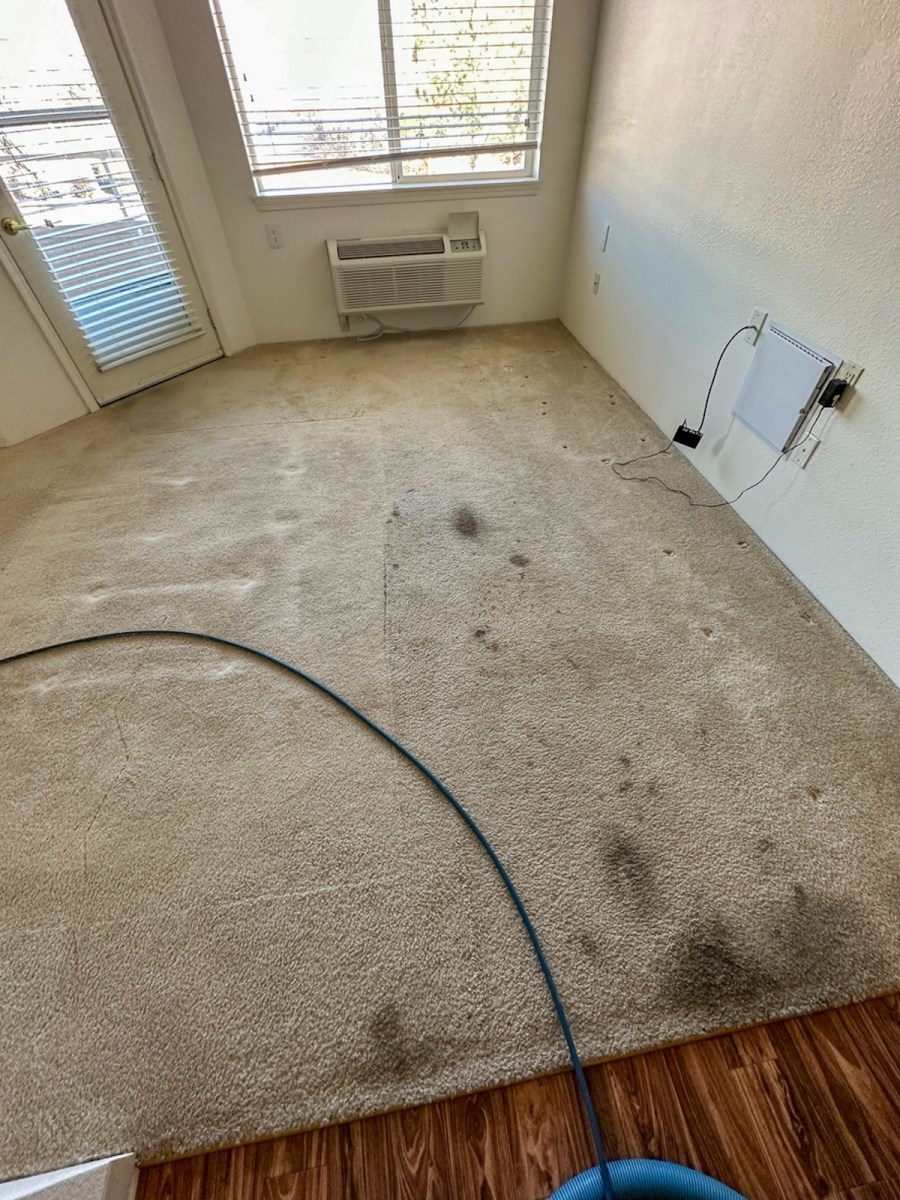
Moldy carpet can be due to a combination of things. Untreated dampness on carpet—whether caused by a persistent leak, overzealously watered plants, or a not-quite-house-trained puppy—can create mold growth in a matter of days.
“If the water has additional contamination or has been on the carpet for more than 48 hours then removal vs. extraction and cleaning is a 50/50 decision,” says Neil Carlson, an industrial hygienist at the Health, Safety, and Risk Management department at the University of Minnesota. “If the water is a category 3, such as sewer backup, overland flood water, or heavy rainstorm water, then removal with containment and good hygiene is the best approach. The remaining surfaces will need to be disinfected with an EPA-approved cleaning agent. Follow the directions on the label of the product,” Carlson explains.
Moldy carpet can also be caused by:
- Poor ventilation in the surrounding area
- Organic matter accumulation
- Flooding
- Improper cleaning
- Structural issues
Whatever the cause, it’s critical to resolve moldy carpet issues promptly.
Signs of Mold in and Under Carpet

Recognizing the signs of mold in or under carpeting is crucial in order to address the issue promptly and prevent further damage or health hazards. “Sometimes there may or may not be a musty odor associated with the carpet,” Carlson explains, saying that the odor “is more likely when the carpet is still damp, or in a location with higher equilibrium relative humidity.”
Here are the most common signs of mold to watch out for:
- Visible discoloration
- Damp carpet
- Lifted carpet
- Water damage
- A strong, musty odor
Project Overview
Working Time: 3 to 10 hours
Total Time: 3 hours to 3 days, depending on the extent of mold growth
Skill Level: Intermediate
Estimated Cost: $245 to $2,500
Before You Begin
“It is best to follow the [Institute of Inspection Cleaning and Restoration Certification] IICRC-520 guidelines for the removal of porous material with fungal contamination,” Carlson says. “The removal of the moldy carpet pad will cause an increase in the level of fungal spores or conidia because it is being mechanically disturbed. Anyone doing the removal will need HEPA-filtered respiratory protection.”
Tools & Materials
Bobvila.com may earn a commission from purchases made through these links.
How to Get Mold Out of Carpet

Whatever causes the problem, tackling mold in carpet requires quick and effective action. Here, find step-by-step guidance for how to remove mold from carpet safely and thoroughly.
Step 1: Ventilate the area.
Ventilate the space by opening windows or, if possible, remove the rug, and take it outside to treat it. While not all molds are a health hazard, it’s best to proceed cautiously by donning a face mask, eye protection, and rubber gloves before you get to work.
Step 2: Treat the visible mold.
If you cannot remove or lift the carpet, proceed by treating the visible surface mold. If it is possible to lift the carpet, do so until you reach the area with mold and examine the backing.
Step 3: Scrub the affected surface.
Scrub the surface of the carpet with a dry, stiff bristle brush to remove mold from carpet. Brush the spores into a dustpan and discard them in a trash bag. (Vacuuming is not recommended, as spores on your vacuum can be spread to other areas in your home.) If you can scrub the back of the carpet as well, do so.
Step 4: Treat the area with an anti-fungal spray.
Thoroughly saturate the moldy area, and at least 6 inches around it, with an anti-fungal spray that specifies it’s safe for carpets (it should also boast a “mold barrier” or “mold prevention” label). If you are able to lift or remove the carpet, spray both the front and the back. Also, spray the area of the floor the moldy portion was in contact with. Let the anti-fungal spray sit for an hour.
Step 5: Blot any excess spray.
Blot the anti-fungal spray with a dry, clean, disposable rag to soak up excess. Do not rinse the area with water or any other treatment. The antifungal agent will continue to work until it has fully dried. Resist using a fan to accelerate drying; that can blow mold spores elsewhere and create new problems. Instead, close your windows, turn the heat up in the room, and use a dehumidifier to let the carpet dry naturally for at least 24 hours. Don’t walk on the area or allow pets to interfere with it while it’s drying as the mold is still “alive” and can potentially be spread.
Step 6: Clean tools and dispose of contaminants.
Clean the bristle brush and dustpan of any mold spores by scrubbing with hot soapy water, then spraying with anti-fungal treatment and allowing it to dry completely. Dispose of the rag and the rubber gloves.
Step 7: Repeat the process.
Once the carpet has dried thoroughly, re-apply the anti-fungal treatment as in step 4, then follow with steps 5 and 6, using a clean, disposable rag to blot. Discard the rag after blotting. Allow the dehumidifiers to run for a few more days to remove mold spores from the air too.
After the carpeting has dried fully, you should be mold-free. Don’t take this for granted, though. Continue checking the spot every day or so for a few weeks to ensure that mold growth hasn’t returned. It can be a slow recurrence, especially if you were unable to remove or lift the carpet, so give it a month before you completely rest easy.
How to Know When a Moldy Carpet Should Be Replaced

If the mold has taken over a larger area and is beyond the scope of DIY cleaning, it may also require replacement to maintain a safe environment. Signs that the mold may be too old or extensive to clean up on your own, according to Carlson:
- Tere is visible mold growth on the carpet
- Deeply embedded mold
- The carpet has a strong musty odor
- There’s water damage beneath the carpet
- The carpet has been water damaged and not dried out thoroughly in 48 to 60 hours
- You’re experiencing health issues (allergies or respiratory symptoms)
Additionally, carpet backing with substantial mold growth of more than a few feet in width should not be merely cleaned—you’ll need to replace the carpet.
If replacing a room’s worth of carpeting is a price you’re not prepared to pay, you can opt to cut off the mold-covered area with a 12-inch border past the damage and insert a new piece of carpet. This is probably not the best solution for a spot in the middle of your living room, but might work if the affected carpeting is in an out-of-the-way corner of the room. Note: Be sure to remove and replace the portion of the underlay or carpet pad as well to thwart mold’s return. If you are concerned about the growth of mold in the home, it’s worth consulting one of the best mold removal companies (such as ServiceMaster Restore or ServPro).
Tips for Preventing Mold on Carpets
By implementing proactive measures, you can minimize the risk of mold forming in your space and prolong the lifespan of your carpet. Here are some effective ways to help keep mold at bay:
- Don’t set potted plants directly onto the carpet, not even with a water tray underneath. Use only glazed pots, not terra-cotta, on carpeting, and use a moisture barrier such as a rubber tray or mat.
- Never pile firewood onto the carpet. Always have a moisture barrier between the wood and the carpet.
- If your pet has relieved itself in an area more than once, speak to your local pet store about deterrent sprays that can make the spot less appealing in the future.
- With humid areas or a humid home, invest in a quality dehumidifier to keep moisture to a minimum. This will protect hardwood flooring and artwork as well as carpeting.

